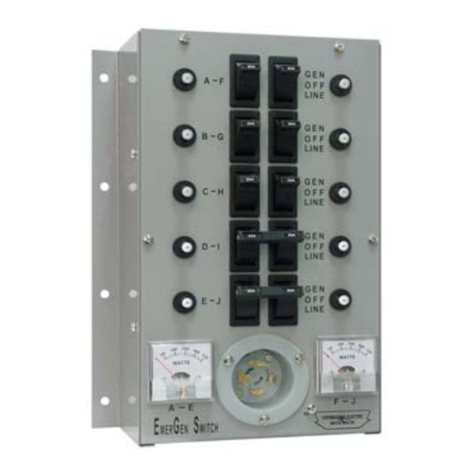
2
SAFETY INFORMATION
1. The National Electrical Code states the connection of a generator to any
electrical circuit normally powered by an electrical utility, must be by means
of an approved transfer switch so as to isolate the electrical circuit from the
utility system when the generator is operating. Your EmerGen Switch is
approved by a Nationally Recognized Testing Laboratory to accomplish the
isolation this code is requiring.
2. Your EmerGen Switch is for indoor use only.
3. A licensed electrician or qualified professional must install this EmerGen
Switch according to local code.
4. To reduce the risk of electrical shock, the MAIN circuit breaker in the load
center must be in the OFF position during the course of installation.
GENERATOR
1. The portable generator used with your EmerGen Switch, must be operated
outside of any building.
2. Always plug the power cord set into your generator and into the EmerGen
Switch before starting the generator and always shut the generator down
before detaching the power cord set.
3. Do not overload your generator or its circuit breakers will trip. Using the
EmerGen Switch’s built-in watt meters, you can balance the loads to avoid
impeding your generator’s performance.
INSTALLATION PREPARATION
1. Decide which circuits will be powered by the generator during a power
outage. The recommended circuits include the fireplace fan or furnace fan
(gas or fuel only), sump pump, refrigerator, freezer, one lighting or kitchen
appliance circuit, and perhaps one lighting circuit elsewhere. Most well
pumps are 240V—or any other 240V appliance—will utilize two EmerGen
Switch circuits. (C&D on the 6 circuit models).
2. Identify the load center circuits you’ve determined are less than 15 amps.
Designate each EmerGen Switch circuit that will be used.
Note: If a circuit you have selected is a GFCI circuit breaker, it
will not be a GFCI circuit while it is powered by the generator.




























